I have led hundreds of photowalks within Kuala Lumpur and a few outside of the city and I have yet to tire of them. There have been official outings and workshops for local photography clubs or consumer events for camera manufacturers as well as private and solo outings over the years. I believe that a photowalk is essential for any photographer. If you are a professional photographer, commercial shoots may bring food to the table but personal photowalks are an opportunity fore creative experimentation and growth. For this article, I shall define photowalks as not strictly street photography per se, but a wider involvement of multiple disciplines in photography that may include city architecture, urban decay, street portraits, and any other genres with subject contents widely available at photowalk locations.
A photowalk is a training ground for photographers at any level. If you are a beginner, you will find abundant opportunities to master exposure and general technical execution. On the other hand, a professional photographer may experiment with new techniques that they have not tried before and not worry about final delivery of images since you have no clients to answer to. Whether you want to test out that new photo stitching technique or just understand the effects of aperture adjustments and the corresponding depth of field, photowalks can be beneficial. Each and every time I’m out shooting, I find myself improving. After all, what better way to push yourself than actually having fun shooting? I call my photowalks “shutter therapy” sessions, and the most important part is to make sure you have an enjoyable time!
All images shown in this article were shot with the Olympus OM-D E-M1 Mark II and M.Zuiko 45mm F1.8 lens.
I look for any opportunity to bring my camera out with me to shoot. I may not always come home with many keepers but that does not mean I should go out less. Kirk Tuck likes to compare photographers with swimmers, you just need to get yourself wet every day. For some people, that motivation may not be easy to come by and here are some tips I can share to switch up the photowalk agenda a little bit from time to time so that each session will be different and interesting.
My first tip is to find beauty in ordinary and lesser things. We are all generally obsessed over shooting something extra-ordinary or dramatic, finding that decisive moment or golden hour magical light to illuminate a Nat Geo like scene for our images. However, exerting effort and time to strive for perfection can be stressful and tiring. Sometimes, the light may be less than ideal or there are no interesting subjects that immediately capture our attention. That does not mean we have to give up and stow away the camera. We just need to be more open-minded about what photography is in the first place – a medium of communication that transfers ideas, messages and emotions though visual reproduction by using a camera. It does not matter if that shot of an urban skyline is not going to win any awards, it is still a true representation of reality which shall only happen once. I am not saying don’t chase perfection or lose focus but that we all should be more adaptable and be versatile. After all, photowalks have no fixed form and we are free to shoot anything that we find out there.
The most common problem that many newcomers to photography face when they join my photowalks is not on how to use a camera or what settings to use to get good results. It has a lot to do with “what should I be shooting? or what should I be looking out for on the streets?”. Knowing what to shoot is just as important as knowing how to shoot with your camera. My simple answer to those questions has always been the same – shoot what moves you. We all see the world and react to situations differently. If there is something that is interesting enough to amuse you or make you look twice, then that could potentially be a good photography subject. I find many photographers trying so hard to emulate what other photographers are doing. Do not get me wrong, I am not entirely against copying another photographer’s style or approach in photography as a form of practice, after all it is an open world and ideas are freely exchangeable and applicable everywhere. The next time you are stuck or have no clue on what to shoot next, just keep an open heart and find things around you that you can connect with. It may be that dark reflection on a window panel, or an old car that looks out of place sitting by a modern building. Or something that looks a bit off but you find that this is what lends it interest as a subject. Listening to yourself can lead to shots that other photographers won’t have produced. At the end of the day, these are your own shots and you should be proud of them.
I have mentioned that a photowalk is an effective training ground for photographers. Use this time to improve your weak points. I was never a fan of the 35mm focal length and I avoid using it for most of my paid jobs but I also spend a great deal of time using the 35mm on my photowalk sessions to understand the focal length better and hopefully to be able to use it more effectively. Some photographer friends tell me that they are not comfortable using prime lenses because they lack the convenience and versatility of a zoom. A photowalk would be the best chance to practice with prime lenses because the output is not mission critical. Want to test out the capabilities of the camera, like how slow of a shutter speed you can confidently hand-hold with the camera’s image stabilization, or how fast the camera reacts to a fast paced scene – a photowalk is the ideal time and place for these experiments.
Do not be afraid to try something completely new during photowalks. Not a fan of black and white? Then force yourself to shoot in monochrome for one full session. Do something that you may not like, challenge yourself and put yourself in situations where you have to work harder to get results. Not sure how to walk up to strangers and ask their permission to shoot their portraits? Push yourself to talk to people on the streets and confront your personal fear! Moving out of your comfort zone is important for growth and photowalks provide you the space to do just that. There is always something to do or new things to experiment with when shooting out there. You may pick up a new skill or two, and it all adds up to being better at the game. The more you shoot, the more confident you get. All you have to do is just get out there and shoot more.
My final tip is to keep things as simple as possible during a photowalk. Minimal gear, and fewer people in a group. I normally just shoot with one camera and one lens these days. It does not matter which lens you choose, you pick up what suits the session or what you want to do for that perticular outing, and don’t worry about missed opportunities or “what if I had that other lens” scenarios. You cannot shoot everything, and you will miss some shots, no matter how prepared you are. Focus on getting the shots that you can and make the best out of these opportunities. Having just one camera and one lens also makes you more focused on your objectives. Having less people in a group allows for more shooting and less chatting. If I wanted to have a conversation I’d go to a coffee shop or a bar, not out on the streets during a photowalk. You can always end the session with a hot cup of overpriced coffee (like I always do) or a cold glass of beer and have all the conversations you want there.
I hope these tips are helpful in keeping photowalks fresh. I encourage everyone to pick up the camera and go out and shoot more. After all, the fun part of photography is being out there, shooting.
__________________
We are also on Facebook and there is a curated reader Flickr pool.
Images and content copyright Robin Wong 2018 onwards. All rights reserved

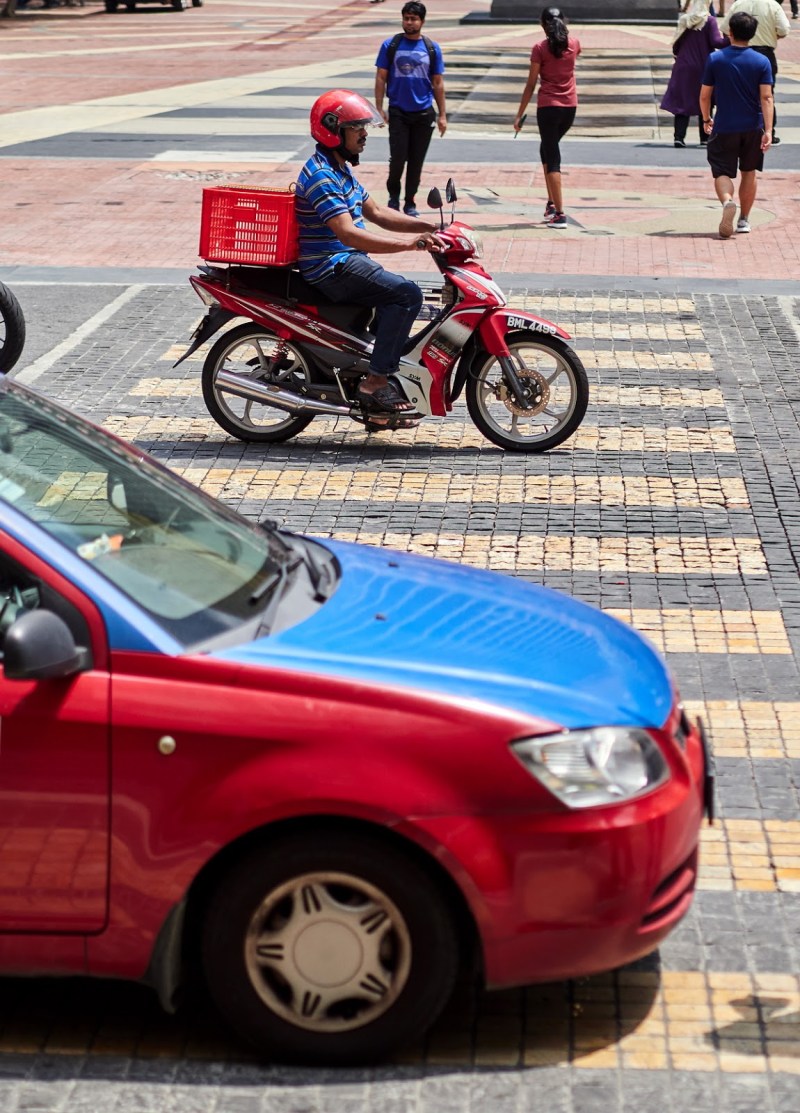
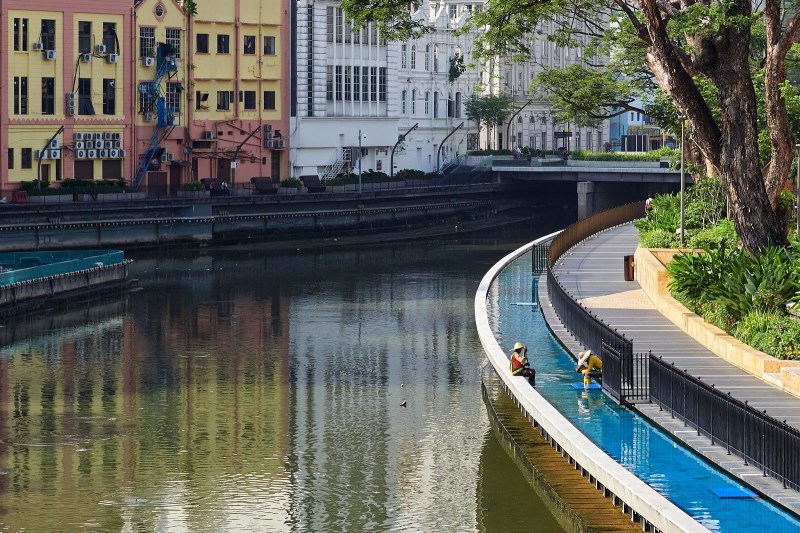


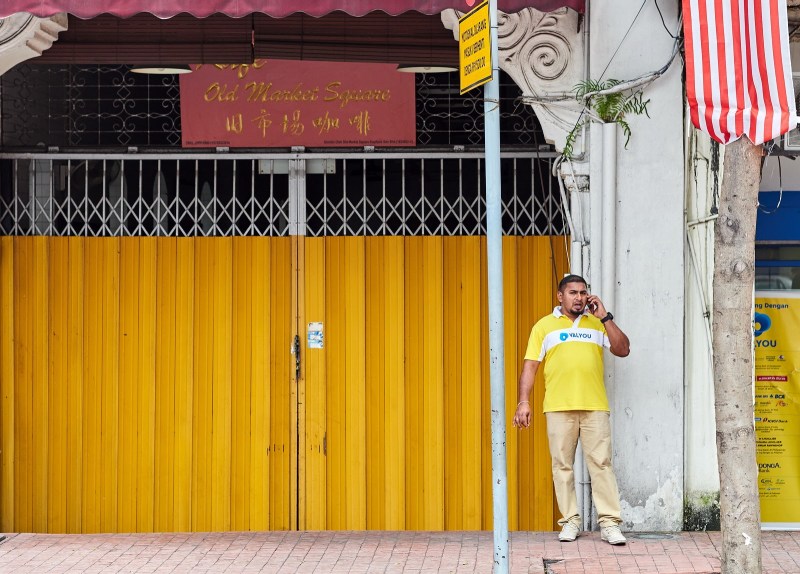



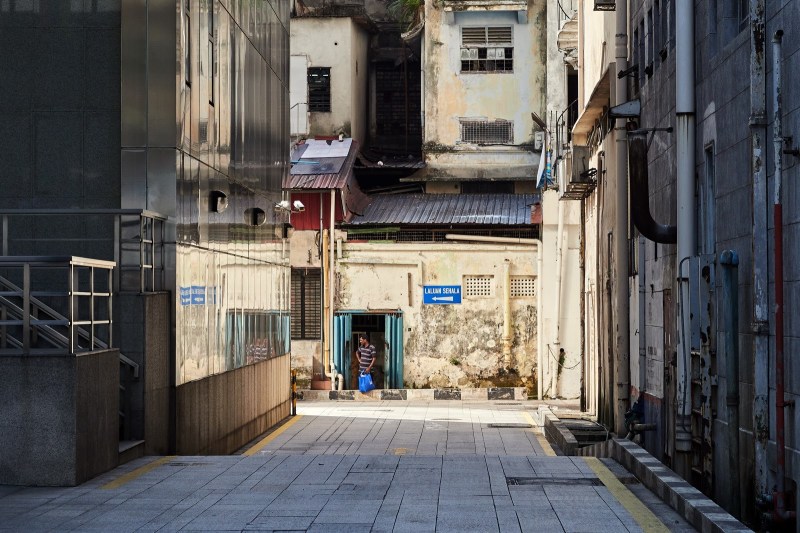
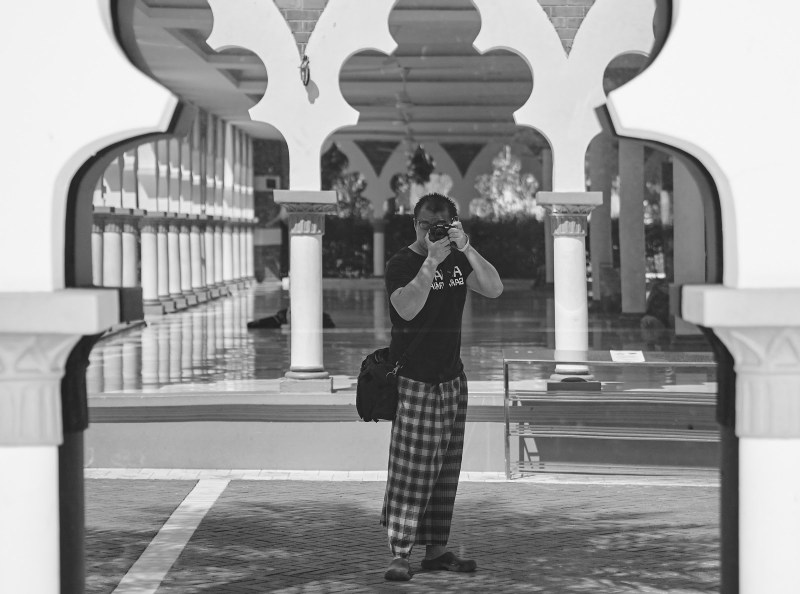





Very good article and excellent pictures
While I have no critique of the text the main reason I write here is because of one of the images.
Although the most important part of photography is the ability to document the world and therefore taking photos of different things is the true essence of photography I think serious photographers always should not only be thinking about capturing nice and well composed photos but be ready to nail the scenes that goes beyond the ordinary and have a content that is actually saying something.
Something that even could be called art and have content and composition good enough to be a painting.
Yes, the bar to achieve such photos is set very high. Especially as I am not talking about staged photos.
Many famous reportage photographers only made a handful of such non-staged photos in their career.
No, as Robin writes we shouldn’t have the goal to chase those elusive photos as we then hardly would take no photos at all!
BUT! We must always be ready to capture such photos when they develop in front of our eyes!
Great photos have been captured in all kinds of light and weather by photographers who were ready to capture the image in the exact peak of the moment.
They could do that because they were prepared for the unexpected and at the moment had a sense for what was a good image and after when looking at all the images could spot which images were standing out from others and also see if a slight trimming or even heavy crop would make the image stronger from a composition point.
To be able to do this a good photographer must develop his eyes and train them to see what is a good image, and why.
This can be done by looking at not only lot of good photography but also very importantly famous paintings and read books explaining them as well as looking at television serials explaining paintings.
Now back to the photos which are interesting scenes, at least for someone from the other side of the planet.
But the only one that stand out for me is the second photo from the pedestrian crossing.
Why? Because Robin here managed to capture three types of “streetusers”, car, motorcycle driver and pedestrian with the same colours, red blue and black!
It’s not perfect. I assume the photo was shown without crop to be in context of the article.
To really concentrate on the important thing in the photo everything distracting must be cropped out.
First the wheels of a car at the upper left corner must be cropped away with a straight line.
Next the pedestrians in the upper right coner must be cropped away.
Finally a slight trimming of the bottom starting at the edge of the shadow from the car at left should be done.
What is left is a quite narrow vertical image that shows only what is essential in the original photo without any other distractions.
It is still not perfect. It would have been better if also the car was sharp.
In my opinion more photos are being destroyed by having a too narrow Depth Of Field than a too wide DOF.
That is why I think Four Thirds and smaller sensors actually have a DOF advantage!
Also the original 4×3 format feels more balanced than the narrow crop I propose.
But, the world doesn’t always cooperate with the format of the sensor (or film) inside the camera!
My point is that among a lot of nice photos of street scenes one photo that at the first look seem to be just one of the bunch of photos from the day actually may have something more, especially with the crop I proposed.
My advice for everybody interested in images (photos, paintings and drawings) is to train your eyes and discover that there are more to see than just nice light and composition based on the rules of thirds. There is also something called content!
Now I hear the fireworks!
So Happy New Year to everybody here!
Thinking more about it a heavy crop at the bottom just above the headlight of the car looks even more concentrated.
The lower sharpness on the car then also look less disturbing.
So it would be better if the lens on the camera had been longer, like for exemple the Olympus 75mm, or some kind of telezoom.
But one has to do the best with what one actually has in the hands! Or simply carry more gear, several cameras with different lenses or a or a long zoom, like the Olympus 12-100mm f/4.
“But the only one that stand out for me is the second photo from the pedestrian crossing.”
I like that one, but the one that intrigues me is the next one. Excuse my ignorance, but what is the purpose of the blue water channel? A jet-ski lane? A special watercourse for ducks and fowl? A decorative gesture by the urban planner for the benefit of street photographers? 😉
Knowing how urban planning works (or rather, doesn’t) in Malaysia, it’s almost certainly a happy accident.
As strange as this sounds, that blue channel thing is for the fish. Yes there are fishes swimming in there.
Top-notch thoughts Ming, and – foremost: shots (the woman in the “yellow-mellow” light spot, the two fishermen, the thoughtful man on the red scooter, the man in rubber boots in the canal! Thanks! And a happy new year 2019!
Credit to Robin 😉
Thanks Dieter, and Happy New Year to you too!
Oh, now I see. Thanks Robin!
Very nice articles and great photography, enjoyed to read and studies though from pictures.
Thanks! Glad to be able to share them.
the photos are so nice, but one of them looks like Marpha village of Mustang. it is nice and all content carry by photos,
thank you for sharing, love to see and read.
It is my pleasure to share! Thanks for the kind words
Hope we will see more photos from different places in the future Rabin
Great information. I just returned from an outing with my EM-10-II and the same lens. Now I’ll repeat it and look for the difference after reading this post. there is always something to learn and try. Never stop shooting, and never stop learning.
Indeed, the key to growth is keep shooting and pushing to get better! Keep the shutter clicking.
Hi !
This is one of the most uplifting advise I have received. I always thought that we could find immense beauty in everyday objects if we only knew how to see . Then I got all confused with the books telling me that my subject must be interesting. By God this article loosens a tight knot in my thought process .
Its true that if we only wait for that one great shot , we will never evolve as a photographer or for that matter any profession . Practicing living in mundane environment is the key to success in any profession , photography being no exception .
Thanks for this insight . You ve helped at least one person immensely . And am sure there would be many like me .
Please keep posting good insightful thoughts on this blog .
You guys have my full support .
Abhijeet *( Buddha in black )
New Delhi , India
Thanks Abhijeet, glad that you find this article useful! Indeed, we must keep shooting, and keep the photography mind active in order to progress. The most common problem I observe among photographers – not shooting enough!
This post is perfect timing as we anticipate our first photo-sojourn of the new year and using all of our brand new photo gear from Santa Claus 🙂 Um Robin, question; in the last photo B&W selfie, is that an E-M1X your sporting and manhandling as if to hide its unmistakable form? Haha… BUSTED!
Well, let’s have a (normally priced) cuppa at the same time and include Jean Pierre’s “take photos where you live”.
This was a hot summer, often too hot (for me) to move. So I spent quite a few afternoons and evenings on my porch facing west towards a lawn and a small wood. With a cup of coffee, or tea, and perhaps a pipe of flake.
And my camera with a tele zoom.
My Photo-sit-downs. Or Shutter sit-ins.
As the sun walked, ever so often there was a new small interesting pattern of light, bark, leaves or shadows. Or a pattern in a cloud. Occasionally I got up to get the fore- or background, or the perspective for some shadows right.
– – –
Quite agreeing with your advice, Robin!
( On the occasional town walk I often prefer a zoom, so as not to have to step back through a wall or right into the traffic…)
Yeah when it gets too hot its just uncomfortable to shoot. I should know, I live in the tropics. And I like your idea of sitting down with a cup of coffee and still have the camera active. And I use zoom from time to time too!
🙂
great photographers, all photos telling all content
I agree there’s nothing wrong with asking someone else for advice on how to take a shot. Then YOU take it – and that’s the point when you learn something. All our lives, we have learned – and continue to learn – from other people. Why should it be any different when we are taking photos?
But having learned, we must then also learn to stand on our own two feet – do our OWN thing.
A very good way to do this is to grab a camera, open the door, and go for a walk. Seeing – not just moving past the context in which we are standing. And, as you suggest, taking photos of things that catch our our, that catch our interest, along the way. Someone once told me that nobody takes photos where they live. I decided to become nobody, so that I could go and take photos where I live. And I’ve found the results quite fascinating. It also provides an excellent opportunity to practice, to remain familiar with the settings of the various cameras that I use, and to be ready for any upcoming trips, somewhere else.
Hey Jean,
I am also that “nobody” you have just described, as I have been spending too much time shooting where I live!
All very good advice and the Olympus 45mm is laser sharp in your hands. But I’m having a problem grasping the relationship of objects in that first image. The flag is sharp enough to have been cut with a scalpel and the distant building is sharp as well. But both of the tower-like structures which appear to bracket the flag — one closer to the camera, the other apparently farther away — are soft.
Is that possible? Or do I just fail to comprehend the actual distances involved?
The two towers are much nearer to the camera. The flag pole was quite a far distance away. The focus was probably set to almost infinity in this shot, hence anything nearer to the frame becomes blur. The confusion was intended! Hope it was not too much.
No, now that their relative distances are clear, all is as it should be. But I can still look at it like one of those graphic puzzles where the outline of two faces in profile morph into a vase, then switch back and forth. At times the flag looks closer than both columns. But then the brain adds in the distant building and it all sorts out differently. Devilishly clever on your part, or I’m slipping into senility.